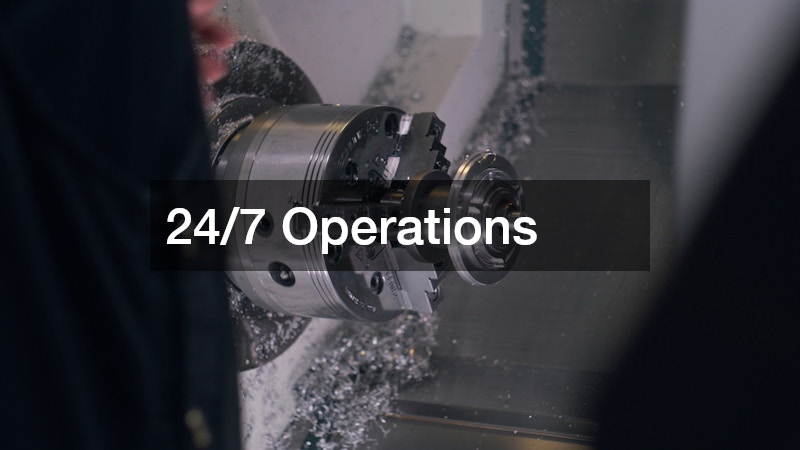In today’s rapidly advancing technological landscape, industries are continually seeking methods to enhance productivity and precision. Robotic fabrication stands at the forefront of this movement, promising not only greater efficiency but also unparalleled accuracy in manufacturing processes. This article explores how robotic fabrication achieves these objectives and transforms various sectors.
Automation and Accuracy
The integration of robots in fabrication utilizes precision programming and automation to minimize human error and achieve higher accuracy in production. Robots follow programmed instructions with pinpoint precision, ensuring that each task is performed consistently and correctly. By eliminating manual intervention, robotic systems reduce variability in product quality, which is crucial in industries demanding high precision.
Robots’ ability to replicate actions with exactness leads to greater product uniformity across large production batches. This level of precision is vital in manufacturing fields where minute deviations can result in significant product flaws. Moreover, robotic systems can be easily reprogrammed to adapt to new tasks or specifications, demonstrating their versatility and precision in manufacturing environments.
Robotic fabrication also enhances the accuracy of production through the use of advanced algorithms and machine learning. These systems can identify patterns and optimize processes for achieving desired precision levels. Robotics not only accelerate the production timeline but ensure that products meet stringent quality benchmarks consistently.
Advanced Sensor Technology
Advanced sensor technology is a critical component enabling robots to maintain high precision in fabrication. These sensors allow robots to detect minute discrepancies in real-time, which helps in making necessary adjustments on the fly. This adaptability ensures that each product conforms to set specifications without human intervention.
Furthermore, sensors enhance safety by providing robots with the ability to perceive their environment and respond accordingly. This is particularly important in complex and dynamic manufacturing setups where precision and safety are paramount. The integration of sensors, such as laser scanners and camera systems, enables fine adjustment during production processes, leading to improved outcomes.
Speed of Production
Robotic systems are capable of operating at significantly higher speeds compared to human workers, enabling faster production cycles. Unlike human labor, which can be limited by physical constraints, robots can undertake continuous and rapid movements with precision. This speed advantage leads to shorter lead times and the ability to handle larger volumes of work efficiently.
The enhanced speed of robotic systems allows for quicker adaptation to market demands, providing businesses with a competitive edge. By rapidly producing components or products, companies can meet customer needs promptly and efficiently. This agility is crucial in industries like consumer electronics, where fast turnaround times are often required.
24/7 Operations
One of the significant advantages of robotic fabrication is its ability to operate continuously without the need for breaks or shifts. Robots can function around the clock, providing businesses with a solution to maximize productivity and meet tight production schedules. This continuous operation capability leads to increased throughput and reduces the cost per unit of production.
Continuous operations also provide businesses with the flexibility to address production demands efficiently, especially in industries where demand can be unpredictable. Robots do not require physical rest or recovery, allowing them to deliver consistent performance even during extended operational periods. This results in optimal utilization of resources and enhanced profitability for companies.
Reduced Waste
Robotic fabrication systems contribute significantly to waste reduction through their precision and efficiency in material usage. The accuracy of robots ensures that materials are utilized optimally, reducing excess and scrap levels in production processes. This is particularly important in industries where raw materials are costly or scarce.
Another aspect of waste reduction is the ability of robots to perform detailed cutting and shaping tasks, ensuring that every piece is produced to exact specifications with minimal material loss. This efficiency in resource utilization translates into cost savings for businesses and lowers the environmental impact of manufacturing activities. By minimizing waste, companies can promote sustainable practices and resource conservation.
Aerospace Production and Quality Assurance
In the aerospace industry, robotic fabrication systems are essential for achieving the precision required in component machining and assembly. Robots ensure that aerospace parts adhere to stringent quality and safety standards, facilitating reliability in aerospace operations. Furthermore, the use of robotics in quality assurance tasks helps to identify and rectify defects quickly.
Robotic fabrication is a game-changer in modern manufacturing and production processes. Its ability to enhance precision and efficiency has broad implications across various industries, paving the way for innovations that promise to revolutionize how we produce goods in the future. As technology continues to evolve, embracing robotic fabrication will be crucial for businesses aiming to maintain a competitive edge.












